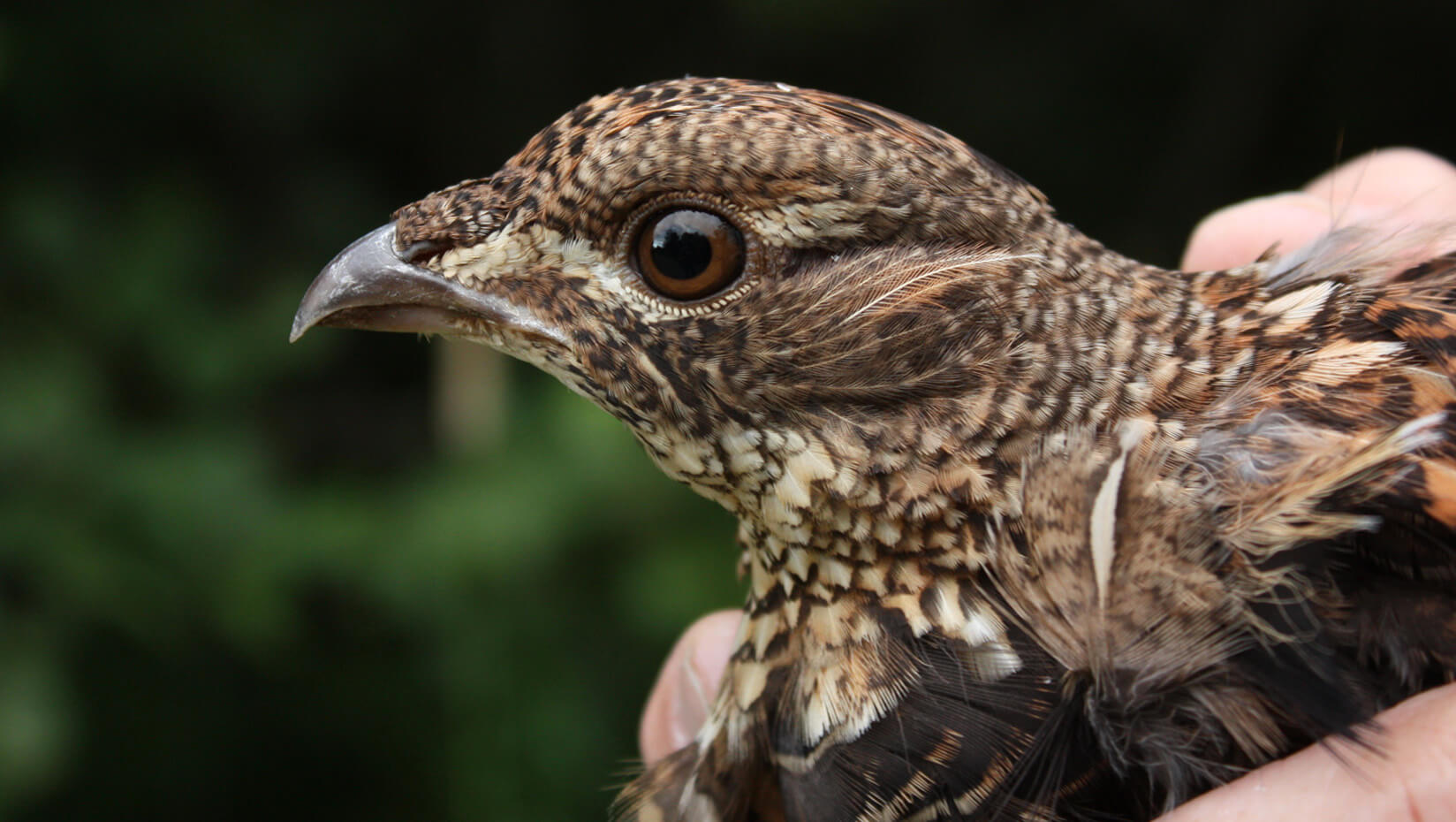
Study supports Maine’s current management practices for ruffed grouse hunting
Maintaining current hunting regulations for ruffed grouse will help ensure sustainable population management in the state, according to a new University of Maine study.
Ruffed grouse live in Maine’s forests year-round and are popular quarry among hunters, including a substantial number of non-resident hunters who travel to Maine to pursue the birds each year. The Maine Department of Inland Fisheries and Wildlife (MDIFW) sets hunting regulations for ruffed grouse during a season that is held from October through December.
The study was led by graduate student Samantha Davis, and was conducted in collaboration with MDIFW biologists. It is the first such study to compile state-specific population information for ruffed grouse, including survival and harvest rates. The researchers tracked 248 radio-marked ruffed grouse in two areas in central Maine between 2014 and 2016, and used these data to analyze how survival rates of ruffed grouse differed among age- and sex-classes and throughout the year. The team also evaluated the rate of ruffed grouse harvest by hunters during the three-month hunting season.
In Maine, ruffed grouse are relatively abundant and appear to have stable populations, compared with other regions of the United States where habitat loss and forest succession are often implicated in population declines. However, there have been local concerns in Maine about the length of the hunting season for ruffed grouse, especially during December when late-season hunting may overlap with the birds’ natural transition from ground foraging to budding in trees during the winter as a survival strategy. Understanding how timing of harvest related to survival during the bird’s annual cycle was a primary goal of the research.
The analysis revealed that survival was the lowest during October, at the beginning of the hunting season, and this was primarily due to harvest. In contrast, hunter harvest during November and December was much lower. Substantial mortality unrelated to harvest occurred during the winter months after the hunting season ended. Other factors, including migration of raptors (a predator of grouse), weather and snow conditions likely contributed to these seasonally changing patterns in survival.
The researchers concluded that late-season harvest of ruffed grouse was not excessive, and recommend maintaining the current hunting season and using additional monitoring to evaluate population responses to any future changes in harvest rates.
“Our results are comparable to other range-wide studies and suggest that current hunting regulations for ruffed grouse in Maine are consistent with sustainable population management,” according to the researchers, whose findings were published in The Journal of Wildlife Management.
Other researchers who contributed to the study include UMaine graduate student Joelle Mangelinckx; Erik Blomberg, an assistant professor in the Department of Wildlife, Fisheries, and Conservation Biology at UMaine; and Brad Allen and Kelsey Sullivan, biologists with MDIFW.
Contact: Cleo Barker, 207.581.3729
